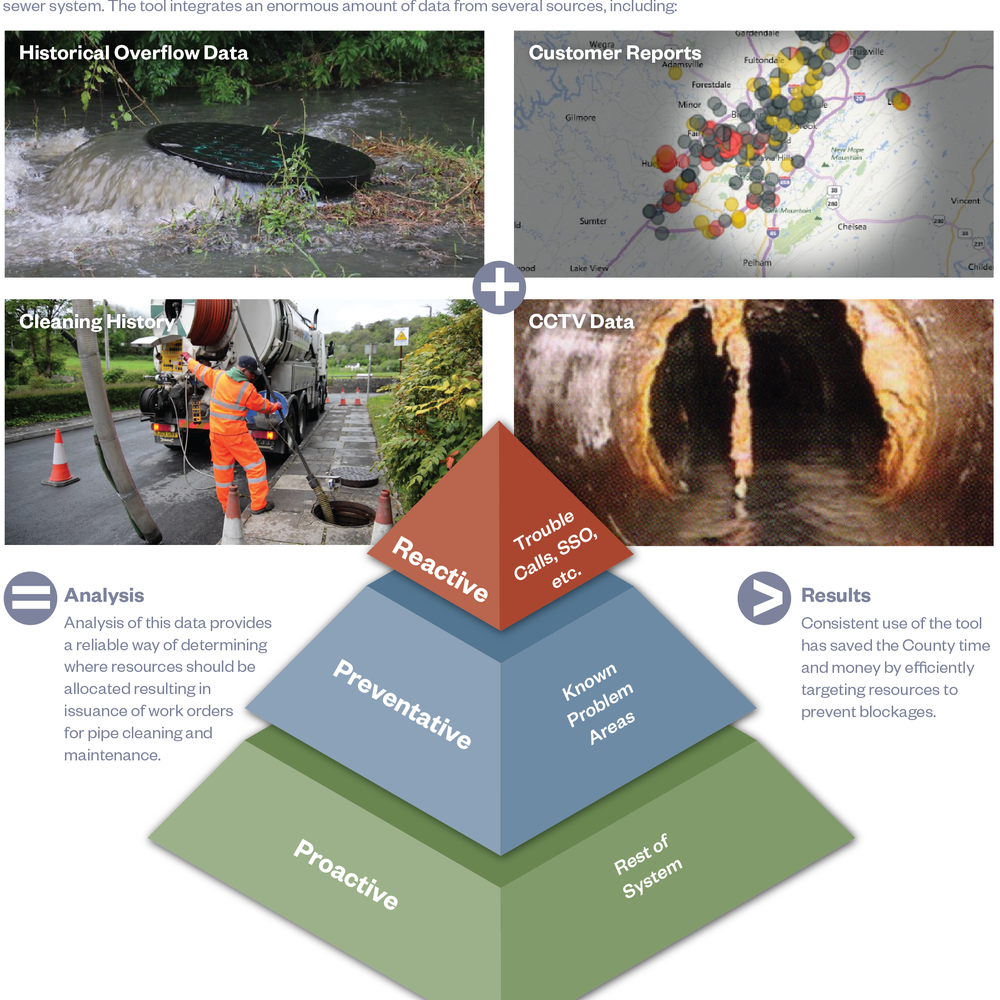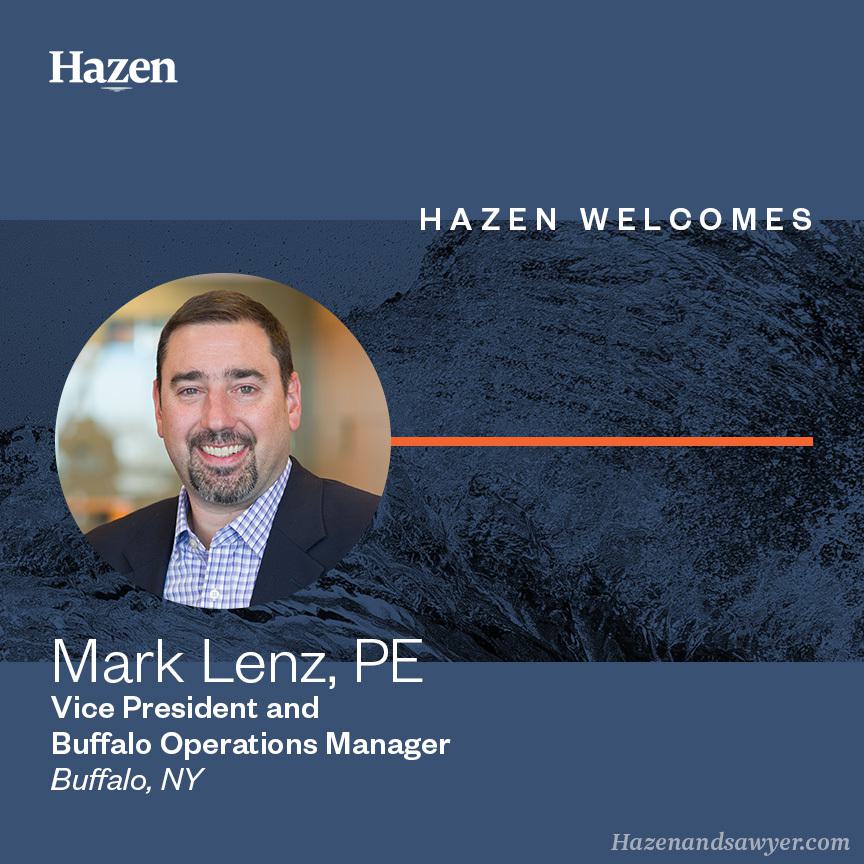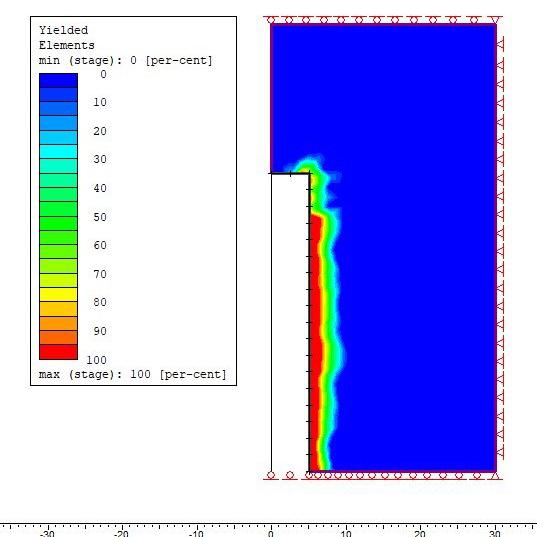A Holistic Approach: Water Treatment Facilities and Distribution System Master Planning
At the WTP, Hazen and Sawyer’s work began with an analysis of the treatment systems and hydraulic capacity to assess what improvements are needed to increase the plant’s capacity from 8 to 14 mgd. The existing residuals handling processes were also evaluated to improve performance and reliability and identify improvements to areas that would potentially limit the treatment plant’s ability to handle and process residuals that would be generated at a plant flow rate of 14 mgd.


Subsequent tasks included:
- A study to evaluate plant hydraulics, the existing electrical and control systems, and other key plant facilities and identify advanced treatment technologies or combination of technologies which will allow the plant to simultaneously meet the log inactivation/removal requirements of the LT2ESWTR and TOC reduction for the Stage 2 DBPR.
- Design of site work, structural modifications, and architectural improvements to address drainage issues and make improvements to the existing Fluoride Room, including a new bulk fluoride storage tank.
- Design and construction-phase services for connection of an emergency generator; design and construction-phase services for residuals piping improvements.
- Design and bidding of various operational, reliability, and power efficiency improvements funded through the ARRA, such as refurbishing the existing raw water pumps, replacement of existing chemical feed tanks and weigh scales, and replacement of old programmable logic controllers with new, modern devices.
- Design and construction-phase services for a new 60-foot diameter gravity thickener and related piping.
- In conjunction with the Distribution System Water Quality Study, two seasons of bench-scale testing (winter and summer) focused on optimizing the existing treatment processes for the removal of organic matter, including consideration of alternative coagulants, acid feed and/or alkalinity adjustment, and changes in coagulant aid polymers. Alternative treatment processes such as the addition of powdered activated carbon and the Magnetic Ion Exchange (MIEX) process were also evaluated on the bench-scale.

Hazen and Sawyer’s work on the water distribution system began with a surge modeling analysis of two pump stations in series and the 24-inch transmission main connecting them. Next, an all-pipes, GIS-based hydraulic model was developed in InfoWater®. This model was calibrated using data from a field testing program that included pump station and district flow measurements using a Pitometer rodmeter, Hazen-Williams C-factor tests, system-wide hydraulic grade line tests, and fire flow tests. The model was then used to perform the City’s IDSE System Specific Study; develop the capital improvement program the Water Distribution System Master Plan; conduct a Water Quality Study, which included an investigation of disinfection by-product formation and low chlorine residuals and water age modeling to evaluate alternatives such as flushing, alternate storage configurations; and perform an operational analysis of the City’s pressure reducing valves.
Following the original 2006 contracts, in 2008 Hazen and Sawyer was awarded two on-call engineering services contracts (one for the WTP and one for the distribution system) for study, design and construction-phase services and has conducted a total of nine task orders under the two contracts.


Project Outcomes and Benefits
- Developed a capital improvement program for phased WTP improvements to meet demand through the year 2030 (12 mgd) and to achieve 14 mgd where possible to allow for potential growth beyond 2030. Identified which advanced treatment technologies or combination of technologies will allow the plant to simultaneously meet the log inactivation/removal requirements of the LT2ESWTR and TOC reduction for the Stage 2 DBPR.
- Improved reliability by providing structural and electrical design to connect an emergency generator to the WTP power system.
- Capitalized on ARRA funding opportunities by providing fast-track design and bid services for operational, reliability, and power efficiency improvements at the WTP.
- Positioned the City for compliance with the Filter Backwash Recycle Rule by providing study, design and construction administration services for improvements to the solids handling facilities, including a new 60-foot diameter gravity thickener and piping connections to the filter backwash equalization basin and 24-inch raw water pipeline.
- Through an extensive field testing program, GIS analysis and modeling effort, identified pressure and fire flow issues associated with the City’s deteriorated, unlined cast-iron grid mains and developed a 20-year capital improvement program to address the issues identified.
- Combined water age modeling with water quality monitoring to analyze chlorine residual and disinfection by-product issues. Utilized results to develop a suite of short- and long-term alternatives to improve water quality and help attain simultaneous compliance with Stage 2 D/DBPR and TCR requirements.




















